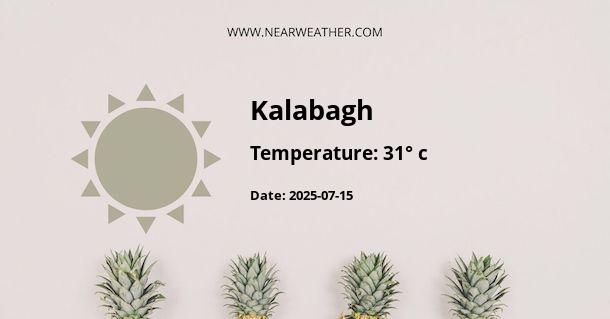Kalabagh, Pakistan: Climate and Weather Year Round
Kalabagh is a small town located in the Punjab province of Pakistan. It is known for its rich cultural heritage and historical significance. In this article, we will explore the climate and weather conditions in Kalabagh throughout the year.
Climate
Kalabagh experiences a hot desert climate, also known as a hot semi-arid climate, characterized by high temperatures and low precipitation. The town is situated in a region that is part of the Indus Valley, which is known for its arid and dry conditions.
The town experiences extreme weather conditions, with hot summers and cool winters. The climate is influenced by the monsoon season, which brings some relief from the scorching heat during the summer months.
Temperature
The temperature in Kalabagh varies significantly throughout the year. Summers are extremely hot, with temperatures often exceeding 40°C (104°F). The peak summer months, from May to July, are the hottest, with temperatures reaching their highest levels.
Winters, on the other hand, are relatively cooler but still mild compared to many other regions. From December to February, temperatures range between 10°C (50°F) and 20°C (68°F). However, nights can be chilly, with temperatures dropping to around 5°C (41°F).
Spring and autumn are transitional seasons, with temperatures ranging from 15°C (59°F) to 30°C (86°F). These seasons offer a more pleasant climate, with milder temperatures and moderate weather conditions.
Precipitation
Kalabagh receives very little rainfall throughout the year due to its arid climate. The average annual precipitation in the town is around 200-300 millimeters (7.9-11.8 inches). Most of the rainfall occurs during the monsoon season, which typically lasts from July to September.
During this period, the town experiences occasional heavy showers and thunderstorms, which provide some relief from the intense summer heat. However, despite the monsoon season, Kalabagh still remains a relatively dry region compared to other parts of Pakistan.
It's worth noting that the Indus River, which flows near Kalabagh, plays a vital role in the local climate. The river acts as a source of moisture and helps in sustaining some vegetation in the otherwise arid landscape.
Wind Patterns
Kalabagh experiences periodic winds throughout the year, with the prevailing wind direction being from the northwest. These winds, known as the "Loo," are hot and dry, further intensifying the already high temperatures during the summer months.
During the monsoon season, the wind patterns shift, and the town experiences occasional gusts of cool and moist winds coming from the Arabian Sea. These winds bring relief from the heat and contribute to the sporadic rainfall during this period.
Extreme Weather Events
Although Kalabagh does not experience severe weather events like cyclones or hurricanes, it is prone to dust storms and sandstorms, especially during the summer months. These storms can reduce visibility and create hazardous conditions for travelers.
Due to the arid climate and low precipitation, the town is also susceptible to droughts. Extended periods of low rainfall can have a significant impact on agriculture and water resources in the region.
Conclusion
Kalabagh, Pakistan, has a hot desert climate with scorching summers and mild winters. The town experiences low rainfall and is mainly dry throughout the year. The monsoon season brings some relief from the heat and occasional showers. The prevailing wind patterns contribute to the extreme weather conditions experienced in the region. Overall, understanding the climate and weather patterns in Kalabagh is essential for residents and visitors to plan their activities and make necessary preparations accordingly.
A - Kalabagh's Latitude is 32.965000 & Longitude is 71.556969.
A - Weather in Kalabagh is 31° today.
A - Climate Conditions in Kalabagh shows clear sky today.
A - Humidity in Kalabagh is 19% today.
A - Wind speed in Kalabagh is 3.53 km/h, flowing at 146° wind direction. today.
